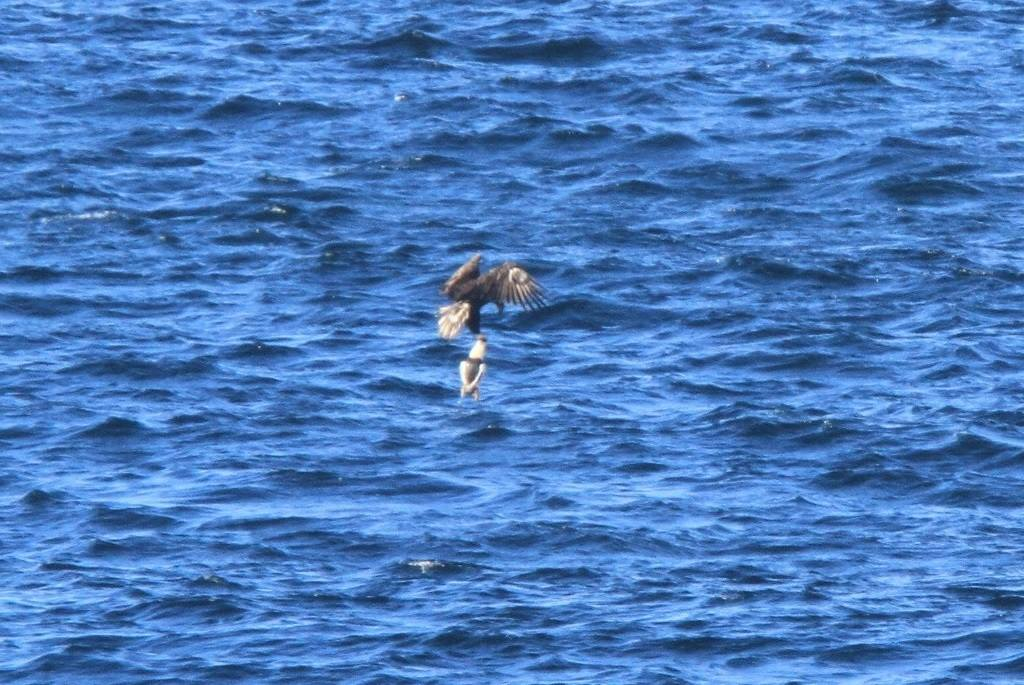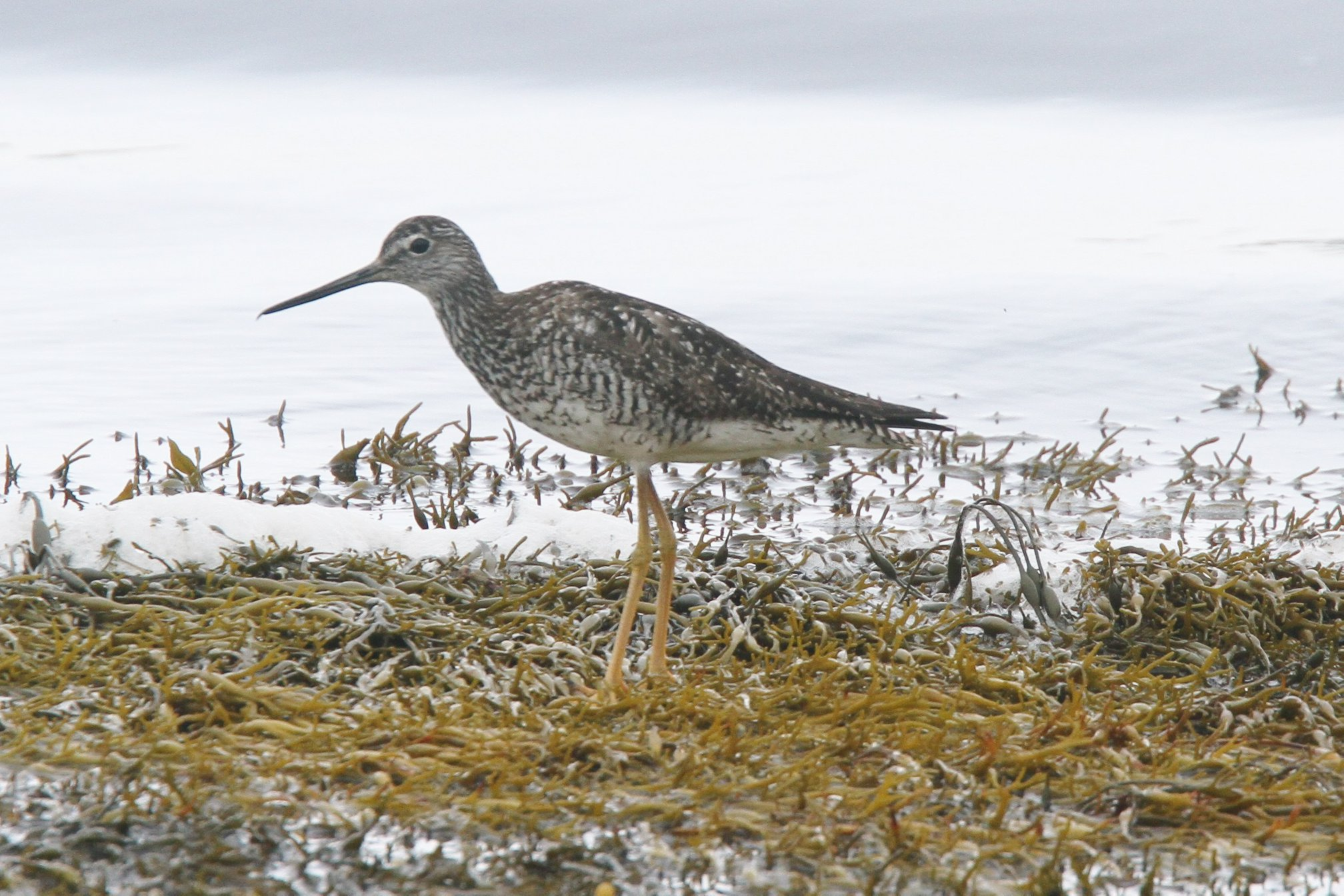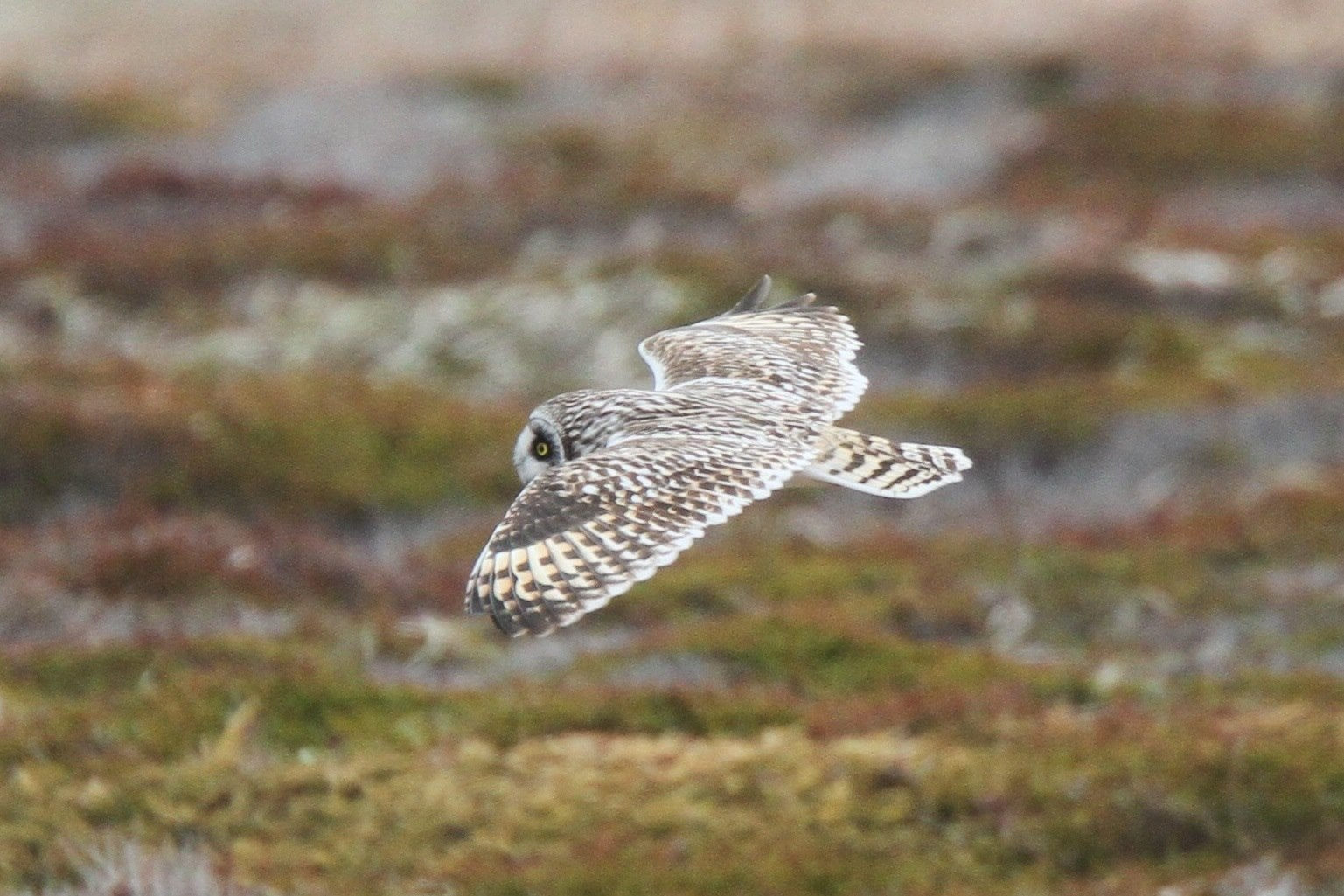Search
Annotated List of Breeding Land Birds
The following 21 species regularly breed in the southern Avalon.
Greater Scaup
Breeding migrant, common in the per and post breeding period, uncommon in summer, very uncommon in winter. A small number of Greater Scaup nest on islands and shoreline edges on the larger interior ponds in the southeast Avalon. Small flocks of 10 to 20 or more birds gather in Biscay Bay and Renews each year suggest that perhaps 10 to 15 pairs nest on the barrens ponds. Greater Scaup prefer a diet of sedges, pond weeds and molluscs rather than fish.
Many of their preferred ponds are not close to roads, Scanning with binoculars and scope is useful. Unfortunately seeking them out across the seemingly flat surface of the barrens is not a good option. Overlayed with surface vegetation the barrens are regularly underlayed with uneven small glacial rocks which make travelling any distance perilous.
During the breeding season females are very hard to find, but irregularly single males and occasionally small groups of males can be found on selected ponds along Route 10 north of Portugal Cove South (PCS) on PCS Brook, on ponds between PCS and Trepassey, and very rarely on ponds on the St. Shott’s Road. Greater Scaup normally nests above treeline in the Canadian arctic. This small breeding colony in the south Avalon is largely underappreciated and undervalued.
Common Merganser
Breeding migrant, uncommon in summer, common in local bays in fall, winter and spring. The Common Merganser nests away from the coast if available in tree cavities or favourable ground-nesting sites near larger remote interior ponds on the inaccessible barrens. Up to late June pairs can occasionally be found at the mouth of the larger river systems such as St Shotts River, Northwest Brook, Trepassey, Biscay Bay River and Renews River. Their presence suggests they nest in a tributary upstream.
Females with young have only been recorded at the mouth of the Renews River and upstream on the Tucken Brush River, a tributary of the St. Shott’s River on the west Trepassey barrens. Given the Common Merganser’s preference for tree nesting near lakes, and the very limited availability of such habitat in the southeastern Avalon, there may only be two or three nesting pairs in any given year. Additional birds migrate into the Avalon in October and remain until April.
Red-breasted Merganser
Breeding resident, uncommon in summer, common in local bays in fall, winter and spring. The Red-breasted Merganser nests on the ground in dense vegetation on the border of freshwater ponds and rivers. Up to late June pairs can occasionally be found at the mouth of river systems, which suggest they nest somewhere in a tributary upstream. Reports in late spring and early summer of small flocks of males or pairs at Northwest River (Trepassey), Biscay Bay River, Portugal Cove Brook and near Chance Cove River suggest they nest in these river systems and probably others. Given more frequent sightings during the breeding season, and the wider availability of suitable habitat, there may be a dozen Red-breasted Mergansers nesting in the area. As a result this merganser is more likely to be encountered during the breeding season than the Common Merganser. Additional birds migrate into the Avalon in October and remain until April.
Willow Ptarmigan
A permanent resident of the barrens. Pairs are best found in spring, and family parties in late summer and fall, along accessible gravel roads and ATV tracks on the barrens. Gravel roads are an attraction to ptarmigan as a place to obtain grit for their crops and to provide dust baths to assist cleaning feathers and removing parasites. The best places to look for ptarmigan in these seasons is on the Cape Race Road beyond Freshwater Cove towards the Cape, the extension of Church Road (the old road to Chance Cove) running north from Portugal Cove South, and on the Cape Pine Road. The paved St. Shott’s Road passes through prime ptarmigan habitat and birds can sometimes be seen from the road especially the last 5 or 6 kilometres into St. Shott’s.
Least Sandpiper
Breeding migrant, uncommon in spring and summer, common in fall. Least Sandpipers prefer to nest near small bog ponds on ocean headlands. Suitable breeding sites are thinly scattered along the southern shore from the Mistaken Point Ecological Reserve to St. Vincents. Leasts may also occasionally nest near the edge of barachois ponds such as at Biscay Bay or backwater ponds in harbours such as at Renews and at Northwest Arm, Trepassey. Since most sites are remote Least Sandpipers are rarely recorded during the breeding season. Out of the breeding season they can be found on local beaches but are considerably less numerous than Semipalmated Sandpipers.
Greater Yellowlegs
Breeding migrant. Common in spring, summer and fall from April 25 to October 15. They breed widely around ponds on the barrens. If one is prepared to venture along local roads and tracks on the barrens, it is relatively easy to find them during the breeding season. Long before you reach a pond where they nest, they will make their presence known with loud and aggressive alarm calls. After the breeding season this bird is widely recorded on all local harbours and beaches.
Arctic Tern
Common breeding migrant. Common in spring, summer and fall from May 10 to October 20. Arctic Terns breed with Common Terns on the island in the inner harbour at Renews and on an island accessible from the west side of Daniel’s Point near the mouth of Northwest Brook, Trepassey. They also nest at Cape Freels, a remoter location between Cape Pine and St. Shotts. Arctic Terns traditionally bred on the inner beach at Holyrood Pond, St. Vincent's. This colony offers the best views of this iconic long-distance traveller. Due to ATV disturbance breeding success of the Holyrood Pond colony is regularly under threat. After the breeding season they can be found about the beaches and harbours where they nest.
Bald Eagle
Permanent resident uncommon in all seasons. Records over the years suggest that the area may have five breeding pairs scattered in territories along the east and south coasts. Bald Eagles prefer to nest in trees in sheltered valleys in close proximity to the ocean. They nest at Renews, near Chance Cove Provincial Park, near The Rookery on the Cape Race Road and along the remote coasts between Trepassey and Cape Pine and between St Shott’s and St. Vincent’s. As a consequence, they have been recorded perched on the rocks in the inner harbour at Renews, aerial displaying over Chance Cove Provincial Park, snatching kittiwake chicks at The Rookery, hunting seabirds over the ocean in Mutton Bay Trepassey, feeding on dead marine mammals on the Arnold’s Cove beach near Cape Pine, and flying over the ocean at the great beach at St. Vincents.. Bald Eagles can be looked for in flight throughout the area year round.
 Above, Clifford Doran has taken a remarkable photo of an immature Bald Eagle successfully hunting a Long-tailed Duck.
Above, Clifford Doran has taken a remarkable photo of an immature Bald Eagle successfully hunting a Long-tailed Duck.
Short-eared Owl
Breeding migrant. Uncommon in all seasons. Populations vary from year to year depending on the population cycle of the meadow vole. In vole years, Short-eared Owls can be quite common but in other years they can be hard to find. This owl is best seen in the early morning, at dusk, or on overcast days flying over the barrens or perched on an elevated rock or gravel mound. The best places to look are on the Cape Race Road beyond Watern Cove River to the Cape, on Route 10 between the Chance Cove turnoff and the Bell Aliant Tower north of Portugal Cove South, and on the west Trepassey Barrens especially along Route 10 and the Cape Pine or St. Shott’s Roads.
Black-backed Woodpecker
Permanent resident uncommon. Usually quiet during most of the year. Listen for persistent tapping or its distinctive “chink” call in larger patches of mature or over-mature spruce and fir woods. This bird is probably not uncommon but many areas close to settlement have been cut over for firewood leaving the mature forest they prefer more distant and harder to access. The best places to look are along the few access roads into mature forest: Bear Cove Point Road, Renews, and at two locations in Chance Cove Provincial Park: near the ocean end of the access road, and south from the access road along the old East Coast Trail which is approximately 1.5 kms west of the parking lot at the end of the road
Merlin
Breeding migrant, most years usually common in spring, summer and fall between April 15 and October 15. Rare in winter. Merlins and Harriers nest widely on the southern shore.
Yellow-bellied Flycatcher
Breeding migrant. Very common in spring, summer and fall. Found widely especially in regenerating mixed forest areas created by previous cutting for firewood. Listen for their distinctive “dew wheat” call very different from the call usually heard in central Canada.
Canada Jay
Permanent resident. Uncommon. Widely dispersed in coniferous forest throughout. Most often found in sheltered valleys such as at Peter’s River, in the vicinity of Northwest Circle and the old Tent and Trailer Park in Northwest Trepassey, at the parking lot in Chance Cove Provincial Park and on Bear Cove Point Road, Renews. Occasionally seen flying over Route 10 in forested areas. Note their distinctive “fluttering” flight.
Boreal Chickadee
Resident breeder. Common. Found widely in coniferous forest areas throughout. Listen for its distinctive call.
American Pipit
Breeding migrant. Common in spring, summer and fall. This bird is generally found in the breeding season only on the outer tips of headlands. Look for it south of the lighthouse at Cape Race, at Mistaken Point, in the Freshwater Cove area, at The Rookery, at Cape Pine and at the fog horn station at East Head, St. Shott’s.
Red Crossbill
Breeding resident. Uncommon. Irruptive and hard to find. To be looked for in good cone crop years. Most often heard in flight. Listen for the “jip” “jip” call. Red Crossbills are often associated with pines, which are absent from the south coast area. They have been recorded in recent years in the Renews and Cappahayden town sites and on the Bear Cove Point access road where they are likely feeding on the cones of larch, fir and spruce. Remarkably, Red Crossbills are regularly found at bird feeders in the Renews town site area feeding on sunflower seeds.
White-winged Crossbill
Breeding resident. Uncommon. Irruptive and hard to find. To be looked for in good cone crop years. Most often heard in flight. Listen for the “jip” “jip” “jip” call and look for the distinctive white in the wing. Often silent while quietly feeding on cones high up in spruce and firs. To be looked for in sheltered valleys, in Chance Cove Provincial Park, and especially in the Cappahayden area and Bear Cove Point access road, Renews.
Pine Grosbeak
Breeding resident. Fairly common. While this bird prefers coniferous forests it can often be found nesting close to or in towns. In late summer they can be found in open areas around houses and in fields such as about the old fish plant at west Trepassey feeding on the seeds of Goat’s Beard and Dandelion. Often detected by their distinctive call reminiscent of Greater Yellowlegs.
Blackpoll Warbler
Breeding migrant. Common in spring, summer and fall from late May to September 30. Blackpolls are widely dispersed in coniferous forest and in tuckamore on the barrens.
Wilson's Warbler
Breeding migrant. Common in spring, summer and fall from late May to September 30. Wilson’s prefer thick mixed habitat including regeneration areas after firewood cutting.
Fox Sparrow
Breeding migrant. Common in spring, summer and fall from April 5 to October 30. Widely dispersed in coniferous forests throughout. The beautiful call of the Fox Sparrow is a feature of the birding landscape from arrival in spring until well into August.
Former Breeding Species
Two species, the Willet and the Rough-legged Hawk, which formerly bred in the south Avalon, are no longer known to breed. For a few years in the teens one pair of Willets bred at Renews. Up until about ten years ago one pair of Rough-legged Hawks bred on the extensive west Trepassey barrens often in the Cape Pine area. Both species are now rarely encountered during the breeding season. See the Checklist for additional details.

